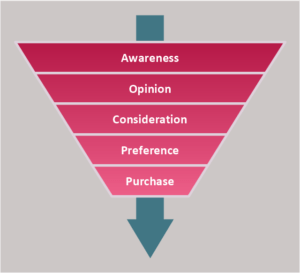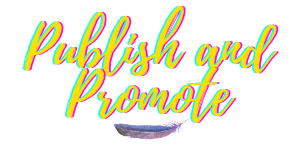9 Book Marketing Buzzwords Authors Need to Know
Tired of figuring out what all the book marketing buzzwords mean? Here are definitions for the 9 you’ll hear the most.
Disclosure: Some links above may contain affiliate partnerships, meaning, at no additional cost to you, Publish and Promote may earn a commission if you click through to make a purchase. You can read our affiliate disclosure in our privacy policy.
I don’t like when industry buzzwords and terminology are dropped into conversations with people who don’t work in that field.
Authors are guilty of using buzzwords, too.
Authors do it, too.
Have you told someone who doesn’t write about adding a POD option to your next book or considered skipping ARCs this time?
Marketers drop their argon and acronyms as well.
It can be frustrating when buzzwords are used without any explanation.
No matter who does it, it’s a way of setting up boundaries that separate those in the know from those who don’t. I prefer inclusion over exclusion.
Learn these book marketing buzzwords
Bearing that in mind, here are nine frequently used book marketing buzzwords that you’ll probably encounter as you educate yourself on how to promote your books. The list isn’t exhaustive, but it’s a solid start.
Table of Contents
1. Call to action — CTA
A call to action, often abbreviated to CTA, tells your readers what you want them to do next.
Authors who are savvy social media users include CTAs in many of their posts. They might say, “If you liked this, please subscribe to my newsletter,” or “What do you think of this plot line? Tell me in a comment.”
All authors should include a “please review this book” CTA at the end of their books.
2. Funnel
This concept illustrates the progression a reader undergoes from their first encounter with your book(s) to the point of purchase. It usually transitions from being aware to developing an opinion to completing a purchase, as evidenced in this illustration. (Notice that it bears a resemblance to a funnel.)

There is no guarantee that everyone who becomes aware of your book will make a purchase. Those who successfully navigate the entire cycle depicted in the illustration emerge at the bottom of the funnel as your readers after purchasing your book.
3. Landing page
This is a simple web page with a single purpose.
For authors, that could be enticing readers to subscribe to your newsletter or buy your book (but not both).
A landing page, with its singular goal in mind, is intentionally designed to be visually simple, devoid of any distractions such as menus or toolbars.
My landing page offering our writing program Write Your Book in 99 days is an example of a landing page. Note that there’s no menu or toolbar.
4. Lead magnet
Lead magnets are also called “reader magnets,” “lead generators,” or “freebies,”. It’s an irresistible gift you offer your target audience in exchange for their contact information.
Keep it simple: only ask for their name and email address.
Most people will not provide more than that level of information. Requiring visitors to fill in more than two fields on a form may cause them to leave, losing your chance to connect with your target audience.
4. Opt-in
When people opt-in, they actively choose to join your email list, typically enticed by your lead magnet. They opt in.
A 100 percent opt-in list is considered the gold standard for email marketing best practices. Do not include individuals in your email list without obtaining their consent. The choice is in their hands – to hear from you or not.
Note the example of How to Build Your Author Platform.
5. Pixels
Pixels can refer to images but in this case, it’s an advertising term referring to a piece of code that is used to track behaviour on a website.
A tracking pixel can also capture activity such as site conversions, web traffic, and other metrics similar to a cookie.
6. Re-targeting
Have you ever noticed how a product you looked at on an e-commerce site shows up as an ad on other sites you visit?
That’s re-targeting. It’s designed to encourage you to buy that product. Think of it as a digital reminder.
Here’s an example of re-targeting and really, it’s a little creepy. I was scouring the internet for outdoor propane cookers to make arrangements for a family picnic. That very same afternoon, I began to receive advertisements for camping gear, outdoor BBQ grills, and similar items.
7. SEO
SEO — search engine optimization — is what you do to your website so that it gets found by search engines.
The stronger your site’s SEO, which refers to creating content that aligns with your target audience’s interests, the greater visibility your site pages will have in search engine results.
8. Split testing
Also known as A/B testing, this function enables you to test various website features, including headlines, text, images, email subject lines, and content, among other elements.
You create two versions of what you’re testing — such as a lead magnet — and show one version to a sample group and the other to a different sample group. Then you track the performance of each version to see which one does better.
9. Upselling
Upsells are designed to sell more to someone making a purchase.
Authors can increase sales by offering a discounted companion workbook, giving volume discounts, or selling extra merchandise or services in the book.
There are many, many more book marketing buzzwords, of course.
Is there a book marketing buzzword you don’t understand? Post your question below and we can help you.
Liked this post? Share it with other writers and authors.

